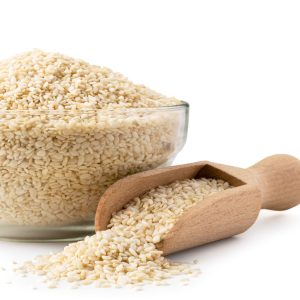Cooking With Leeks
I just received an email from Carolyn who asked, “Can I use substitute leeks for onions in vegetable soup? I never use leeks. I heard they get slimy. thanks, carol”
My response to Carol is yes, you can. Leeks are in the same family as onions and in my humble opinion, they are one of the most underrated vegetables readily available. I love them and the flavor they add to a dish. Whatever you are making might taste even better than with onions.
All About Leeks
Leeks (Allium ampeloprasum var. porrum) are versatile and flavorful vegetables that belong to the same family as onions, garlic, and shallots. They have a rich history, having been cultivated for thousands of years and holding a special place in various culinary traditions around the world. Originating from the Mediterranean region, leeks were a dietary staple for ancient Egyptians, Greeks, and Romans, and continue to be widely grown and enjoyed in numerous countries today.
A leek consists of a bundle of leaf sheaths, commonly referred to as the stem or stalk, which is the edible part of the plant. The leaves are long, flat, and dark green, transitioning to a white base often blanched by earthing up soil around the plant as it grows. This technique helps keep the lower part of the leek tender and milder in flavor.
Leeks are not just any vegetable- they are celebrated for their delicate, sweet, and subtle onion-like taste, making them a popular ingredient in various dishes. They can be eaten raw, sautéed, roasted, or added to soups, stews, and casseroles. One of the most famous leek-based dishes is the classic French soup, vichyssoise, a creamy blend of leeks, potatoes, and cream, served chilled. In Wales, leeks are a national symbol and are prominently featured in Welsh cuisine, such as in cawl, a traditional stew.
Leeks are not just delicious, they are also a nutritional powerhouse. They are an excellent source of vitamins A, C, and K, and contain significant amounts of folate, iron, and manganese. Leeks are also rich in dietary fiber and have a high water content, which makes them low in calories and beneficial for digestion. Moreover, they possess antioxidant and anti-inflammatory properties due to their content of flavonoids, polyphenols, and sulfur compounds. These compounds are believed to contribute to cardiovascular health, support the immune system, and may even have cancer-preventive effects.
Buying and Growing
When selecting leeks, look for firm, straight specimens with dark green leaves and white, bulbous ends. Avoid leeks that are wilting or have yellowing leaves. Proper cleaning is essential, as soil often gets trapped between the layers. To clean, slice the leek lengthwise and rinse thoroughly under running water, or soak in a bowl of water, swishing to dislodge any dirt.
Don’t be intimidated by the thought of growing your own leeks. They are relatively easy to cultivate and hardy plants that withstand cold weather. With a long growing season, plenty of sunlight, and well-drained, fertile soil, you’re on your way to a successful leek harvest. Whether you choose to plant by seed or use young transplants, consistent watering and occasional fertilization will encourage healthy growth. So, why not try it and enjoy the satisfaction of growing your own flavorful and nutritious leeks?
Leeks’ culinary versatility, nutritional benefits, and ease of cultivation make them valuable additions to kitchens and gardens. They enhance meals with their unique flavor and healthful properties.

Substituting Onions with Leeks
Substituting onions with leeks can be a delightful way to add a more delicate and subtly sweet flavor to various dishes. Leeks, an Allium family member like onions, offer a milder taste that can enhance recipes without overpowering other ingredients. This substitution is particularly useful in recipes where a softer, less pungent flavor is desired.
When substituting leeks for onions, the general rule is to use the leek’s white and light green parts, as these sections provide the most tender and flavorful components. The dark green leaves are typically tougher and more suitable for making stocks or as an aromatic in cooking rather than for direct consumption.
For most recipes, you can use leeks in a 1:1 ratio to replace onions, although the volume might need slight adjustment based on personal taste preferences.
Leeks work well in a variety of dishes where onions are traditionally used. They are excellent in soups, stews, and casseroles, providing a smooth and gentle onion-like flavor.
For instance, swapping onions with leeks can yield a richer, more refined taste in a classic potato soup. In stir-fries, quiches, and pasta sauces, leeks can add a subtle sweetness and depth, enhancing the overall flavor profile.
To prepare leeks for substitution, they must be cleaned thoroughly. Leeks tend to trap soil between their layers, so slicing them lengthwise and rinsing them under running water or soaking them in a bowl of water can help remove any dirt.
Cooking times for leeks are similar to those for onions. They can be sautéed, caramelized, or used as a base for stocks and broths. When caramelizing, leeks develop a beautiful golden color and a sweet, mellow flavor, much like onions but without the sharpness.
Substituting onions with leeks can add a new dimension to your dishes. Leeks offer a milder, sweeter flavor that blends harmoniously with other ingredients. This substitution is versatile and easy, making leeks a great option for those experimenting with their culinary creations while maintaining familiar tastes.
Cleaning Leeks
Cleaning leeks properly is essential due to their layered structure, which often traps soil and grit. Here’s a step-by-step guide to ensure your leeks are clean and ready for cooking:
- Trim the Leek: Cut off the root end and the dark green leafy tops. The white and light green parts are the most tender and commonly used in recipes.
- Slice Lengthwise: Cut the leek in half lengthwise. This exposes the layers, making washing out any trapped dirt easier.
- Rinse Under Running Water: Hold each half under cold running water, fanning the layers with your fingers to flush out any grit. Rinse thoroughly, as dirt can be hidden deep within the layers.
- Soak in Water (Optional): For extra assurance, slice the leeks crosswise into half-moons, place them in a bowl of cold water, and swish them around. The dirt will sink to the bottom, while the clean leeks float. Lift the leeks out with your hands or a slotted spoon, leaving the grit behind.
- Drain and Dry: After washing, drain the leeks in a colander and pat them dry with a clean kitchen towel or paper towel.
By following these steps, you can ensure your leeks are free from dirt and ready to enhance your dishes with their delicate flavor.













3 Responses
Thank you, I used them and the soup is wonderful! I will use them more often.
I need to substitute leeks in a recipe that call for 1cup of diced onion. Do I use 1cup of diced leeks? Or do I use smaller amount or more?
Hi Sue, leaks are similar in taste to sweet onions or green onions. Red and yellow onions are a bit more stronger tasting but I often exchange one for one leaks to onions and don’t notice any difference.